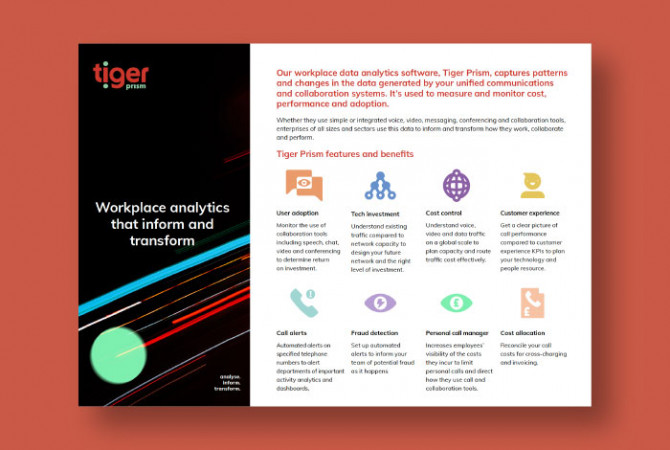Harnessing data to make a difference
Technology adoption has soared within education – with blended learning being one of the biggest drivers of this digital transformation.
Usage of unified communications and collaboration (UC&C) tools such as Microsoft Teams and Zoom is also at an all-time high across the sector – helping to bridge the connection between staff and students when teaching and studying remotely.
The world of education is responsible for shaping our future generations, and workplace data-led insights can help institutions to make more informed decisions that improve their learning, financial, and wellbeing strategies.
Middlesex University London
Discover how Tiger Prism is used by one of the capital’s top public universities, helping them to reduce missed calls, boost revenue and enhance student experience during clearing.
Benefits of big data in education
From budgeting to blended learning, data can help both further and higher education institutions to:
- Prevent course drop-outs
- Streamline internal processes
- Measure student engagement
- Maximise clearing opportunities
- Evaluate resource gaps and requirements
- Provide tailored staff and student support
- Identify teacher and pupil wellbeing issues
- Measure and improve pupil satisfaction levels
- Sweat assets for maximum ROI
- Foster a more holistic learning environment
And more!
What role does data analytics play within the education sector?
Our Sales Director, Caroline Lewis, recently shared her thoughts on the role data analytics plays within the education sector, and how it can help to create a more enhanced learning experience for students and staff, as schools, colleges, and universities across the country.
Key capabilities
User adoption
Monitor the use of collaboration tools including speech, chat, video and conferencing to determine return on investment.
Tech investment
Understand existing traffic compared to network capacity to design your future network and the right level of investment.
Cost control
Understand voice, video and data traffic on a global scale to plan capacity and route traffic cost effectively.
Customer experience
Get a clear picture of call performance compared to customer experience KPIs to plan your technology and people resource.
Cost allocation
Reconcile your call costs for cross-charging and invoicing.
Fraud detection
Set up automated alerts to inform your team of potential fraud as it happens.
Personal call manager
Increases employees’ visibility of the costs they incur to limit personal calls and direct how they use call and collaboration tools.
Call alerts
Set up automated alerts on specified telephone numbers to alert departments of important activity.
“…Clearing is the most important project I take part in every year – and it cannot fail, as this has a massive reputational and financial impact on the university. Tiger’s dashboards and reporting are critical in making sure everything happens as it should and operates like a well-oiled machine – we couldn’t run clearing as effectively without it.”
“…The Middlesex University London core clearing operation was very successful, with no major issues to deal with.
…As always, the information sent by Tiger was immensely useful, and the dashboard was excellent.”
“…I have to reiterate my thanks to the whole team in moving the planned maintenance to the 1st of September too, allowing us to ensure we had the data we needed throughout the entire operation.”
“…Due to late BTEC results, we also worked the Sunday to assist those students, and again, the information from Tiger helped us — both remotely and on the ground.”
“…In total, over the four days we took in excess of 3,000 calls to the different inbound lines.”
Roger Fox, Operations Group Manager, Middlesex University London
Related content
Let’s talk
Whether you have a question about our software or our business, we’d love to have a chat. Complete the form below and we’ll get back in touch as soon as possible.






